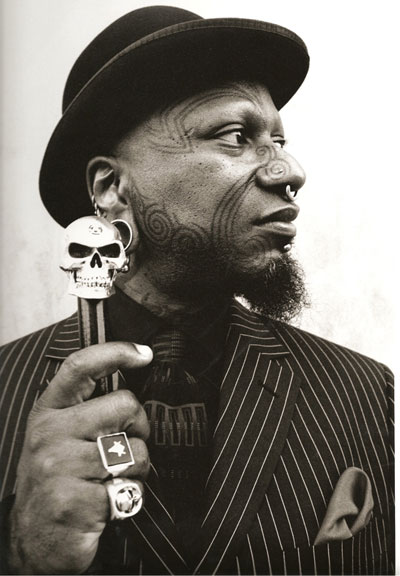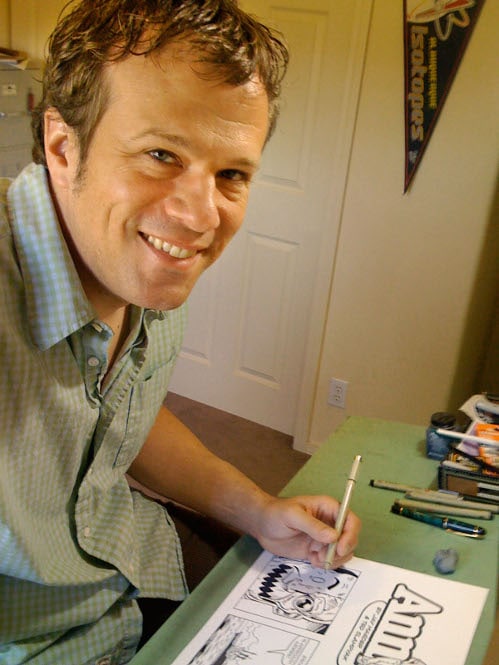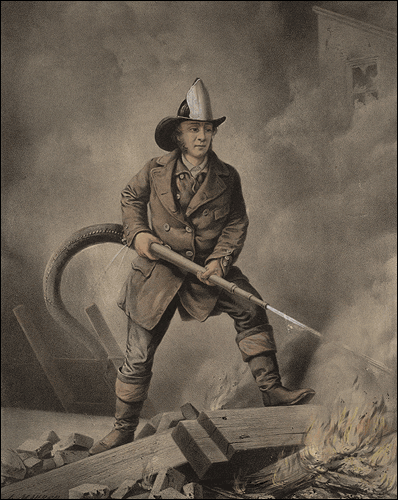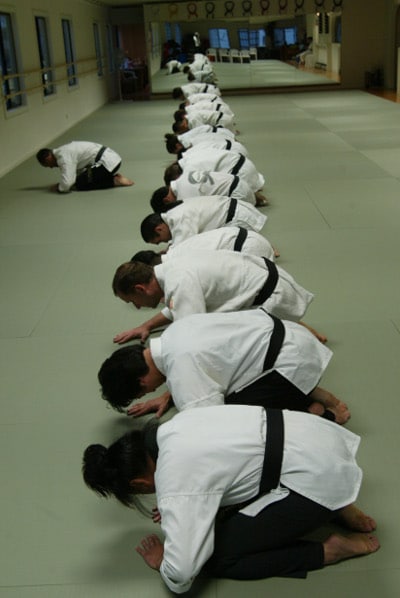
Once again we return to our So You Want My Job series, in which we interview men who are employed in desirable jobs and ask them about the reality of their work and for advice on how men can live their dream.
The martial arts are a manly pursuit as they teach discipline, focus, respect, and self-defense. Mastering a martial art, which requires years of dedication, is even manlier. Today’s interviewee, Jino Kang, has mastered not one, but several martial arts. Jino holds black belts in Hapkido (7th degree), Tae Kwon Do, Kyokoshin-Kai Karate, and has brown belts in Judo and Gracie Jiu-Jitsu. Last year he was inducted into the Masters Hall of Fame. He also directs independently financed martial arts films to showcase the arts. In the 1980s, Jino began teaching Hapkido in the Bay Area, and his passion for teaching continues today at his school, Hapkido USA. One of his students, Nolan Necoechea, interviewed Jino for our series. A big thank you goes out to both of them for taking part.
1. Tell us a little about yourself (Where are you from? How old are you? Describe your job and how long you’ve been at it, etc).
I’m from Inchon, South Korea. Our family immigrated to US in 1971. My current age is 50 (but I look 20 something…that’s what my wife says). My job is to empower people and students to be the best they can through teaching martial arts. I have been teaching Hapkido since 1982. I started martial arts at the age of 4.
2. Why did you want to become a martial artist? When did you know it was what you wanted to do?
I really didn’t know, I just was. It literally was in my blood. My father is a Grand Master in Hapkido, my uncle was a master in Hapkido. They used to take me to the Do Jang (Martial Arts School) on back of their bicycle when I was still asleep in wee hours of the morning. I would wake up with a Gi already on to the smell of sweat laden canvas mats and the sound of Ki-Ai’s from students who trained before work.
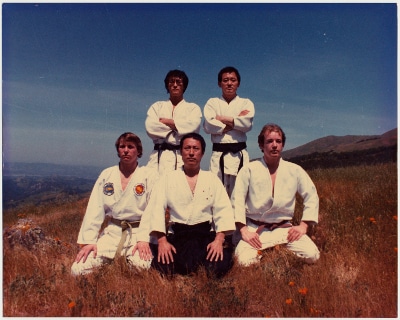
3. Many martial artists, once they have mastered their art, then open a school to teach others. Having spent your time learning the martial art, how do you learn the business skills necessary to do this and run the school successfully? Or do you concentrate on teaching while hiring someone else to handle the business side of things?
When we first opened a school in the 80’s, in Concord, California, I didn’t even think about learning about business. All I was interested in was teaching dedicated students and becoming better myself. We had 20 to 30 tough students who excelled in their techniques, but were barely able to pay the rent. After several years of struggling, my friend Lee who happens to be a martial arts school owner himself introduced me to a consulting company that handles your business operations, like tuition collections and marketing practices, for martial arts school owners.
After following their guidelines for a few years, I was able to actually make a decent living, doing what I love, training and teaching martial arts. You do have to wear both hats as a businessman and an instructor. Servicing your students to the best of your ability, and having a third party handle business of tuition collections.
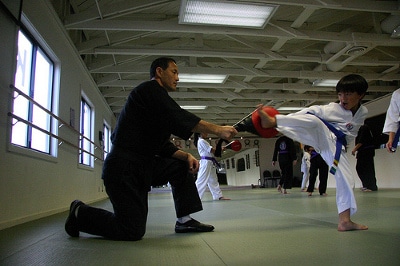
Jino teaching a kids’ class at his current school in San Francisco (Hapkido USA).
4. What qualities are essential in becoming a successful and effective teacher of marital arts?
First of all, you must have passion to share your knowledge and have the technical abilities to teach it. If you don’t have the desire to teach, the school will fail without a doubt. Your students will feel it and sense that you are just there to make a buck. They will leave. If your techniques are inferior and stale, after a while, students will challenge it. As an instructor, you must constantly train to improve and hone your skills to validate what you’re teaching.
Secondly, you must be dynamic and motivating while at the same time patient and understanding enough to know that all students have different abilities and different ways of learning. Kids and adults have different speeds; you must exercise patience and encouragement, especially with kids, who thrive on awards of merit and recognition. Sometimes that is as simple as a verbal, “Great Job, Johnny!” and a pat on the back. Adults need the same thing but often with more specific needs and motivations, like “I need to lose weight,” “I want to learn self-defense,” “I’m bored with the gym routine and want to try something different.”
To be a successful teacher, you must be able to sense what the students need and deliver the kind of quality training that allows them to perform to the best of his or her ability.
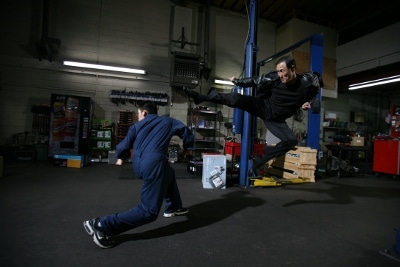
Jino performing a flying kick for the film Hand 2 Hand – The Art of Combat
5. Are there any other professional paths a martial artist might take besides opening a school and teaching?
One way is to be a professional fighter and promote yourself that way, through venues like the Ultimate Fighting Championship. You may have to start as an amateur, and you may secure a sponsor after winning several bouts. Then, move up to pro level. A tough route, but if you have the courage and discipline you can make it.
Another way is to promote yourself through film and TV. A lot of martial artists take this path as well, working as stuntman, fight choreographer, actor and such. Bruce Lee, Chuck Norris, Steven Seagal, and JCVD, just to name a few. For me, I wanted to do it all, teach and film, so I have written, produced, directed and acted in two of my own films, Blade Warrior and Hand 2 Hand – The Art of Combat. My latest film, Hand 2 Hand, received 5 nominations and won 2 awards at Action On Film International Film Festival this year, including “Best Action Sequence-Martial Arts Feature,” which as a martial artist I’m very proud of.
6. What is the best part of your job?
Seeing the smiling faces of children after they passed their Belt Exam. Watching an adult member lose 50 lbs from hard training at my school. And when students go away to college, get married and return to my school with their kids and train as a family.
7. What is the worst part of your job?
When student quits. As an instructor, I invest a lot of time and effort to each student, and it breaks my heart when they quit for any reason.
8. What’s the work/family/life balance like?
The swing shift schedule, where you’re off time comes midday when most people are at work, does play havoc on your family life. But when quality time is set aside for family, it works. Like any other work, don’t bring it home. When you’re at home, your family must be the focus of your attention and love.
9. What is the biggest misconception people have about your job?
You have to beat up people/students on regular basis. Not true-if I did that I wouldn’t have any students!
Here’s Jino in action, taking on multiple opponents at once:
Tags: So You Want My Job


